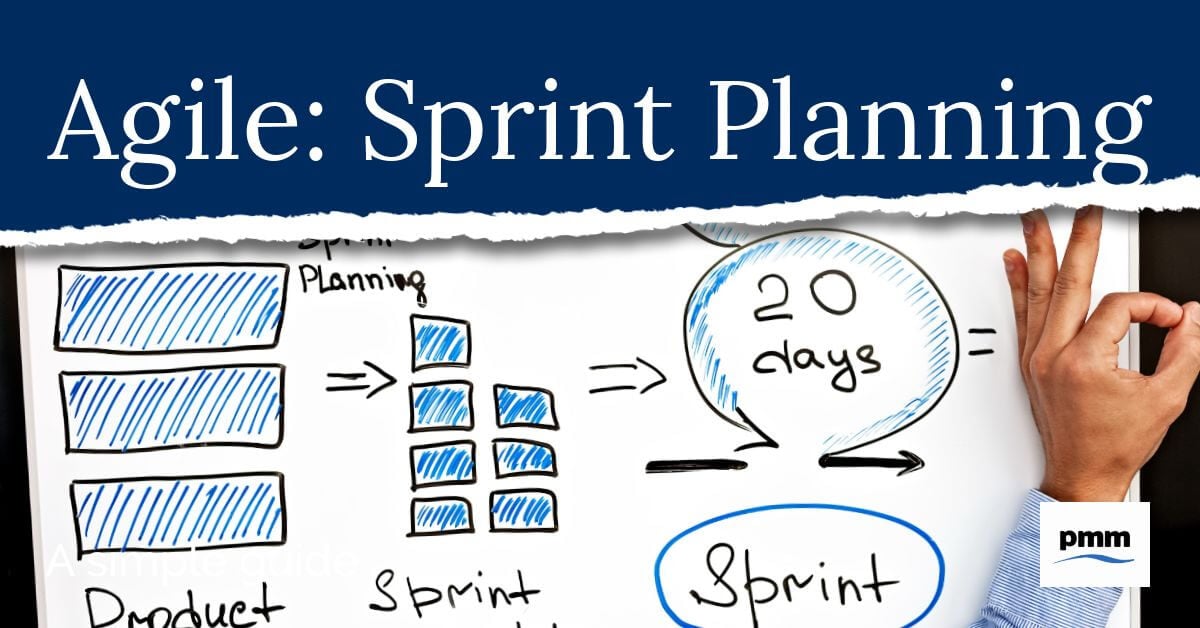Sprint planning, or iteration planning, is an event that is embedded within the Scrum framework. It identifies the which items from the product backlog that will be delivered in the upcoming sprint, and how that work will be delivered so that the increment will be achieved.
Who is involved in Sprint Planning?
All members of the team are involved in Sprint Planning. For details of Agile roles visit Overview of Agile Project Management Roles.
Product Owner
The product owner establishes a sprint goal, which is used to identify which product backlog items will be worked on during the sprint.
Scrum Master
The Scrum Master acts as the facilitator, ensuring that effective discussion takes place. They gain agreement on the sprint goal and identify which product backlog items will be included in the sprint backlog.
The Scrum Master is also responsible for keeping the event within it’s time-box; as a guide, a maximum of eight hours is allocated per one-month sprint.
The Project Team
The wider project team members estimate how many product backlog items they will be able to complete, and detail how they will deliver those items.
Sprint Planning Structure
Typically, sprint planning is divided into two parts, scope and plan.
Scope
A prioritised list of product backlog items is offered, from which the team identify which items they will be able to complete during the sprint. The team must ask themselves various questions during this part of the planning process.
- What is the sprint goal?
- Which items from the product backlog are ready and will contribute towards the success of the sprint goal?
- What is the availability of the project team during this sprint?
- Based on this availability, what is the team’s capacity?
- Which items will be included on the sprint backlog based on this capacity?
- Do the team feel confident that they will be able to meet the sprint goal?
Plan
During part two, detailed discussions will take place between the project team about how the product backlog items selected will be delivered. Tasks for the product backlog items will be identified, any dependencies between items will be highlighted and team members will be allocated to product backlog items.
Benefits of Sprint Planning
Sprint planning gives the project team a shared understanding of the sprint’s end goal and the work that they will complete to reach that goal. It also provides an initial plan as to how the team will approach the work.
Downfalls of Sprint Planning
The strength of sprint planning depends upon having a refined product backlog list from which the team can draw items. Where there isn’t a refined list, sprint planning will be ineffective as planning time will be spent trying to gain a better understanding of the items on the product backlog.
Failing to establish a specific sprint goal is also a common downfall of sprint planning, which results in the team working on unrelated items. As a result, the team perform a full sprint without making a lot of progress.
When should sprint planning be used?
Sprint planning should be used if the sprint framework is being used, or if the chosen methodology involves timeboxed iterations. Following a similar event is also useful for teams following a more flow-based methodology to create a shared understanding of queued items.
Sprint planning is a staple of the scrum methodology, allowing the whole project team to understand the sprint goal, which items from the product backlog list will be delivered, and how they will deliver them.
Divided into two parts, sprint planning can be useful across methodologies, but only if a refined product backlog exists.






